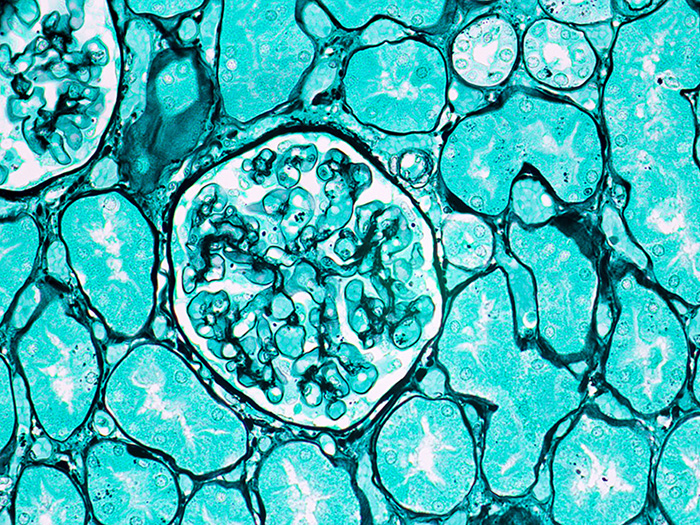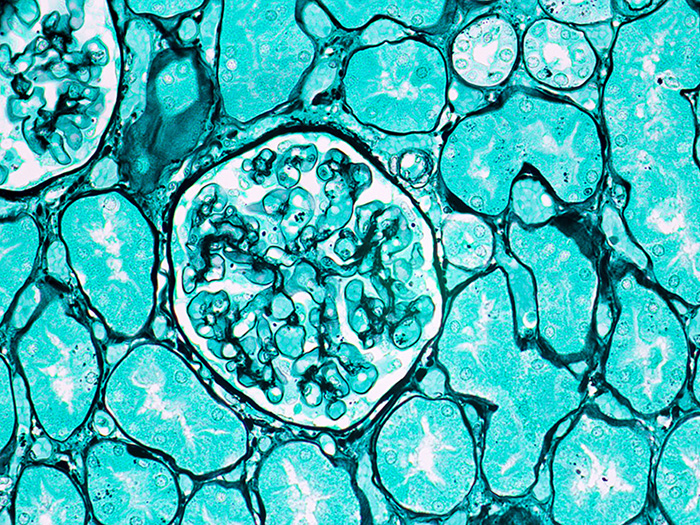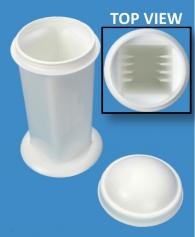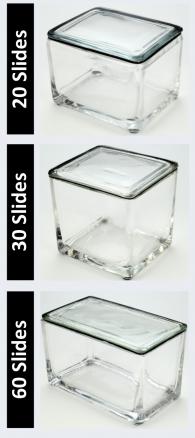Basement Membrane
|
Validation Stain: Jones Basement Membrane
Other Applicable Stains: Gomori, PAMM
|
PRODUCT SPECIFICATIONS:
Tissue: Positive staining kidney.
Fixation: Formalin 10%, Phosphate Buffered (Part 1090).
Section/Glass: Paraffin sections cut at 4 microns on Superfrost™ Plus slides.
Quality Control Stain: Jones Basement Membrane quality control stained slide(s) included.
Reactivity: Guaranteed product specific reactivity for one year from date of receipt. Revalidate after one year to verify continued reactivity.
Storage: 15-30°C in a light deprived and humidity controlled environment.
Intended Use: To verify histological techniques and reagent reactivity.
Before using unstained control slides, review the enclosed stained slide(s) to ensure that this tissue source is acceptable for testing needs.
CONTROL SLIDE VALIDATION:
| With Jones Basement Membrane Stain Kit | Part 9167A | Individual Stain Solution | |
| Solution A: | Methenamine 3%, Aqueous | 250 ml | Part 12239 |
| Solution B: | Silver Nitrate 5%, Aqueous | 50 ml | Part 13805 |
| Solution C: | Sodium Borate 5%, Aqueous | 50 ml | Part 13826 |
| Solution D: | Periodic Acid 0.5%, Aqueous | 250 ml | Part 13308 |
| Solution E: | Gold Chloride 0.25%, Aqueous | 250 ml | Part 11287 |
| Solution F: | Sodium Thiosulfate 2.5%, Aqueous | 250 ml | Part 13889 |
| Solution G: | Light Green SF Yellowish Stain 0.1%, Aqueous | 250 ml | Part 12203 |
APPLICATION:
The Newcomer Supply Basement Membrane Control Slides are for the positive histochemical staining of basement membranes in tissue sections.
PRESTAINING PREPARATION:
- Heat dry sections in oven according to your laboratory protocol.
- All glassware/plasticware must be acid cleaned prior to use.
- See Procedure Notes #1 and #2.
- Prepare Silver-Methenamine Working Solution; combine and mix well:
- Solution A: Methenamine 3%, Aqueous 40 ml
- Solution B: Silver Nitrate 5%, Aqueous 2 ml
- Solution C: Sodium Borate 5%, Aqueous 4 ml
- Proceed to Step #10 for Microwave Modification.
- Preheat Silver-Methenamine Working Solution to 45°C-60°C.
- See Procedure Notes #3 and #4.
- Do not preheat solution if using Microwave Modification.
NEWCOMER SUPPLY VALIDATION PROCEDURE:
- Deparaffinize sections thoroughly in three changes of xylene, 3 minutes each. Hydrate through two changes each of 100% and 95% ethyl alcohols, 10 dips each. Wash well with distilled water.
- See Procedure Notes #5 and #6.
- Place in Solution D: Periodic Acid 0.5%, Aqueous for 15 minutes.
- Wash in gently running tap water for 5 minutes; rinse in distilled water.
- Place slides in preheated Silver-Methenamine Working Solution and incubate in 45°C-60°C oven or water bath, or bench top/room temperature for 12-18 minutes until sections appear paper-bag brown.
- Periodically remove the control, rinse in warm distilled water, check microscopically for adequate silver impregnation. Basement membranes should be dark brown. If the tissue structures are not sufficiently dark, place slides back in heated silver solution. Recheck at 2-3 minute intervals until desired intensity is achieved.
- Staining at room temperature will require longer incubation times.
- Microwave Modification: See Procedure Note #7.
- Place sides in a plastic Coplin jar containing prepared Silver-Methenamine Working Solution (Step #3) and microwave at 70°C for 3 minutes.
- Check microscopically for adequate development.
- If additional incubation is required, return slides to heated Silver-Methenamine Working Solution.
- Rinse in three changes of distilled water.
- Tone sections in Solution E: Gold Chloride 0.25%, Aqueous for 1 minute.
- Rinse well in three changes of distilled water.
- Place in Solution F: Sodium Thiosulfate 2.5%, Aqueous; 2 minutes.
- Wash in gently running tap water for 5 minutes; rinse in distilled water.
- Counterstain in Solution G: Light Green SF Yellowish Stain 0.1%, Aqueous for 1 minute.
- Quickly rinse slides in two changes of distilled water.
- Dehydrate in two changes each of 95% and 100% ethyl alcohol. Clear in three changes of xylene, 10 dips each; coverslip with compatible mounting medium.
RESULTS:
| Kidney glomerular basement membranes | Black |
| Intra-glomerular deposits | Black |
| Reticular Fibers | Black |
| Nuclei | Outlined in black |
| Background | Light Green |
PROCEDURE NOTES:
- Acid clean all glassware/plasticware (Part 12086) and rinse thoroughly in several changes of distilled water.
- Plastic (Part 5500), plastic-tipped or paraffin coated metal forceps must be used with silver solutions to prevent precipitation of silver salts. No metals of any kind should come in contact with silver solutions. Only glass thermometers should be used.
- Preheating Silver-Methenamine Working Solution to 45°C-60°C prior to incubation is suggested for timely silver development. A water bath or oven can be used for preheating. Begin preheating the silver solution approximately 20-30 minutes before use.
- Staining at higher temperatures will cause the development reaction to happen faster, but may cause precipitate to form in the working silver solution and deposit on slides. Maintaining the silver solution between 45°C-60°C will help to minimize precipitate.
- Drain slides after each step to prevent solution carry over.
- Do not allow sections to dry out at any point during procedure
- The suggested microwave procedure has been tested at Newcomer Supply. This procedure is a guideline and techniques should be developed for use in your laboratory.
- If using a xylene substitute, closely follow the manufacturer’s recommendations for deparaffinization and clearing steps.
REFERENCES:
- Luna, Lee G. Manual of Histologic Staining Methods of the Armed Forces Institute of Pathology. 3rd ed. New York: Blakiston Division, McGraw-Hill, 1968. 97-99.
- Sheehan, Dezna C., and Barbara B. Hrapchak. Theory and Practice of Histotechnology. 2nd ed. St. Louis: Mosby, 1980. 187-188.
- Modifications developed by Newcomer Supply Laboratory.







